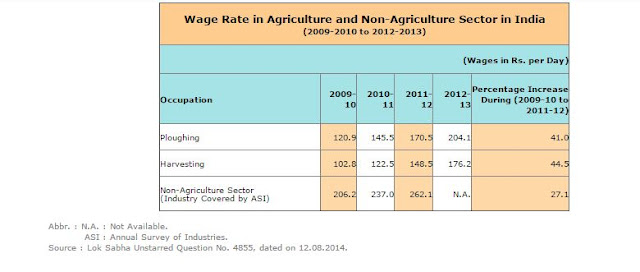NFHS-5 (2019-2020) some interesting points
NFHS-5 (2019-2020) state reports are available. In this post, we will discuss and compare three states: Maharashtra, Gujarat, and West Bengal. I will try to discuss some interesting points
1) Land ownership:
Table no. 1 (NFHS-5)
Table no. 2 (NFHS-4)
3.8 percentage reported that they have Non irrigated land for Gujarat, 17.5 for Maharashtra, and 2.8 for West Bengal. That is very problematic for Maharashtra. This non-irrigated land was around 19% according to a previous NFHS survey (2015-16). The Maharashtra state failed to convert this land either into irrigated land or into non-agricultural land for non-agricultural purposes as both non-agricultural land and irrigated land share a small proportion compared to other states. Interestingly Maharashtra government in 2016 has launched the Jalyukt Shivar Abhiyan to make Maharashtra drought-free. That doesn't add up here. The percentage of non-irrigated land for Maharashtra is still high. The state has to take efforts to deal with non-irrigated land.
The percentage of owning a house in Maharashtra and Gujarat is higher in rural areas compared to urban areas while for West Bengal it is higher in the urban areas, house ownership in West Bengal is very low. And that again little problematic.
2) Child mortality
If we compare Gujarat, Maharashtra, and West Bengal, the child mortality rate is higher than Hindu for Muslims for both Maharashtra and West Bengal, in fact, West Bengal, it is very high but for Gujarat, it is lower than Hindu. Same for infant mortality, under 5-year mortality rate.
????!!!!
But if we look at SC ST OBC and General Category, these rates don't have any significant differences for West Bengal and Maharashtra but for Gujarat, rates are very higher for SC and ST categories.
If we compare Gujarat, Maharashtra, and West Bengal, the pattern of school attendance is also interesting. For Gujarat, Maharashtra, both for rural and urban, the male's (boys) school attendance is more than female (girls) school attendance (for all religions). But for West Bengal, for both rural and urban and for both Hindu and Muslim, the girl's school attendance rate is more than boys'. For Muslims, the gap is very high. Why Muslim girls have more school attendance than boys?
A) It is said that dropout is disproportionately higher for households who are self-employed in non-agriculture. Yes, it may happen. The substitution may happen. Is it because Muslim boys in West Bengal looking for early jobs or getting engaged in manual or unskilled jobs or self-employment? i.e are they substituting the jobs for education? But this pattern of employment is similar for other states like it is not unique for West Bengal (I checked for PLFS data). NFHS's previous data also suggests the same thing. Muslim households do have engagement in self-employment which can be linked to school attendance but again is it unique for West Bengal. This pattern is not different than other states. Then why?
B) Now second Is it because Muslim girls in West Bengal want to attend school more than boys? Why? The general explanation is marriage. More education can help for marriage.. Or is it because of the sense of becoming more independent if yes then is it unique for West Bengal? My quick calculation for last 2015 NFHS data suggests that the weighted average marriage age of Muslim women for West Bengal is around 27-28 where it is around 26-27 for Maharashtra and it is around 18 for Gujarat. So does that explain anything?
4) Nutritional status of Children
The nutritional status of children compared to the last NFHS survey (2015-16) is poor.
For the ST category, the status is very bad.









.jpeg)


टिप्पण्या
टिप्पणी पोस्ट करा